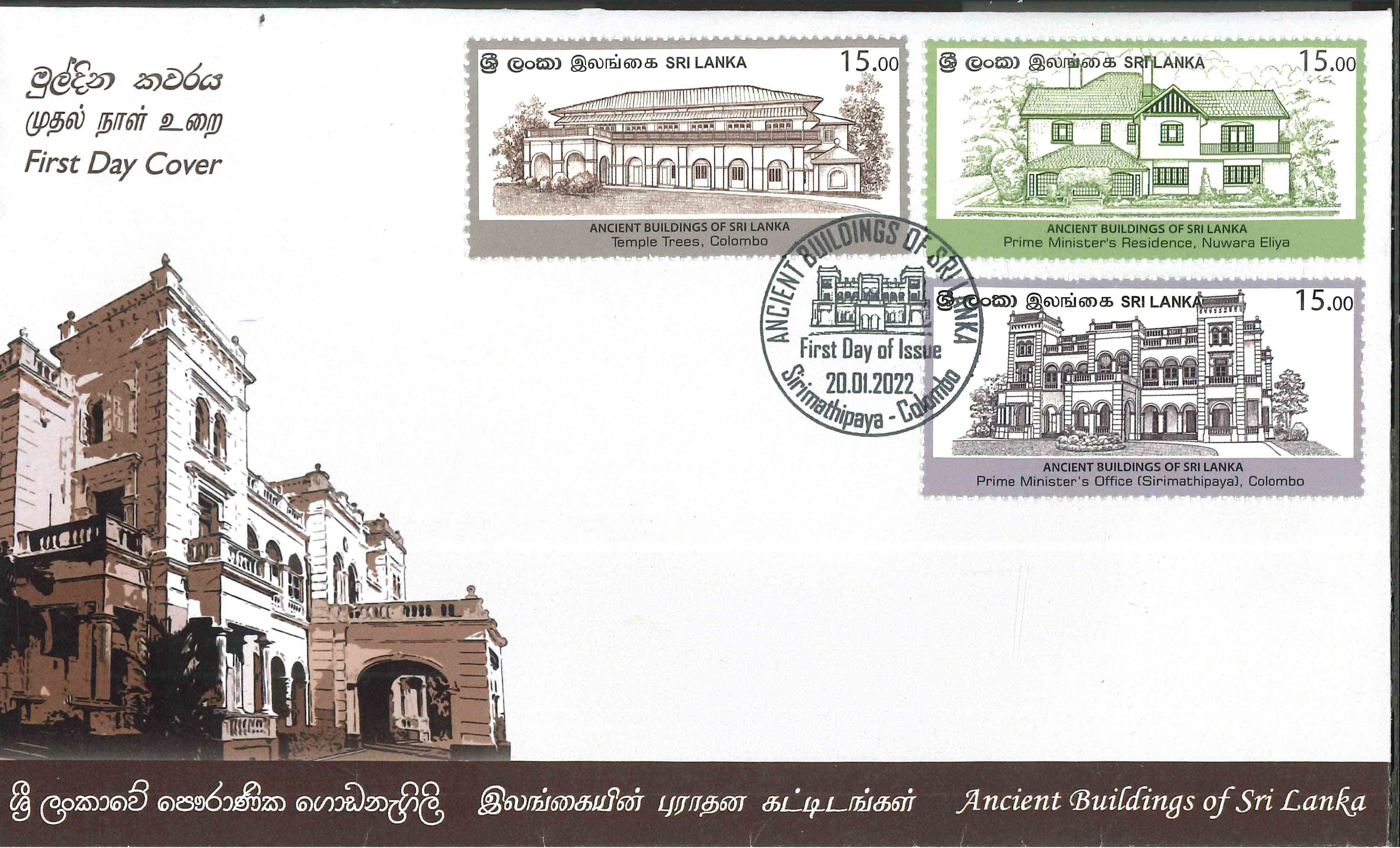This two-storied building called the Temple Trees, which was named solely because of Temple Trees full of fragrant flowers surrounded in the garden, situated in No. 150, R.A. de Mel Mawatha, Colombo 03, is the official residence of the Prime Minister of Sri Lanka.
This mansion is older than 200 years and has a history dating back to the period of Dutch rule in the country. The original building used as a distillery during the Dutch rule is known as 'De Brandery'. By the year 1796, when the British occupied the coastal areas of Sri Lanka, the owner of the distillery was a baron named Daniel Ditloff.
After he left the island, Frederick Baron Mylius, a Dutchman who served under the British, used this as his private residence. He has modified the original building so that it could be used as a residence and that plan remained unchanged for almost 150 years. After his death in 1805, until the mansion was owned by the government in 1903, it has been bought by Europeans from time to time and used as a private residence.
Sirimathipaya Mansion, Temple Trees, and Prime Minister's Official Residence, NuwaraEliya Commemorative Stamp

This home was named 'Temple Trees’ by John Philip Green who bought this mansion in 1856. It is said that he has spent a lot of money to decorate the mansion and create the garden as it is today. After the death of John Philip Green in 1892, his brother Staniforth Green, who owned the Temple Trees, started the first ice factory of Sri Lanka on this site.
The Temple Trees and the ice factory were auctioned after the death of Staniforth Green and it was bought by the Messrs Tarrant, Henderson & Company. Its owner, J.A. Henderson has converted it into his residence and has rented it to Sir Everard im Thurn, who held the position of Lieutenant Governor of Ceylon in 1899.
Later, the 'Temple Trees' was Purchased by the Government, and since November 1903 it was used as the official residence of the Lieutenant Governor of Ceylon. After term of Sir Everard the post of Lieutenant Governor was abolished and the post of Colonial Secretary was established instead. Sir Alexander Ashmore was the first Colonial Secretary of Ceylon. Beginning from him, to 1931 when the post of Colonial Secretary was abolished by the Donmore Commission and replaced by the post of Chief Secretary, the official residence of all the Colonial Secretaries was the 'Temple Trees'.
Meanwhile, in 1925, since the 'Queen's House', the official residence of the governor, was dilapidated, the then Governor Sir Herbert Stanley and his wife had lived in 'Temple Trees' for some time. After the position of Chief Secretary was created, from Sir Henry Bourdillion, who was the first Chief Secretary of this country, to Sir Francis Graeme Tyrell, Sir Manuel Wedderburn, Guy Stanley Wodeman, Robert Drayton, and Sir Charles Collins, 'Temple Trees' was the official residence of all the Chief Secretaries.
Wynne Jones, the Chief Architect of the Public Works Department, carried out the renovation of Temple Trees for it to be suited to the Prime Minister's official residence, and then on 19th January 1948, Mahamanya D.S. Senanayake has come to reside in 'Temple Trees'. After Sri Lanka gained independence from British rule in 1948, the 'Temple Trees' became the official residence of the Prime Minister, who was the head of the Cabinet of Ministers. Accordingly, Mahamanya D.S. Senanayake was the first Prime Minister to make the 'Temple Trees' his official residence.
This stately mansion, though it has undergone periodic renovations and additions, still retains the Dutch architectural features such as thick walls, well-ventilated spacious rooms, large doors and windows with ventilation holes, and high pitched tiled roofs, is used as the official residence of the Prime Minister of Sri Lanka since 1948 to date.



